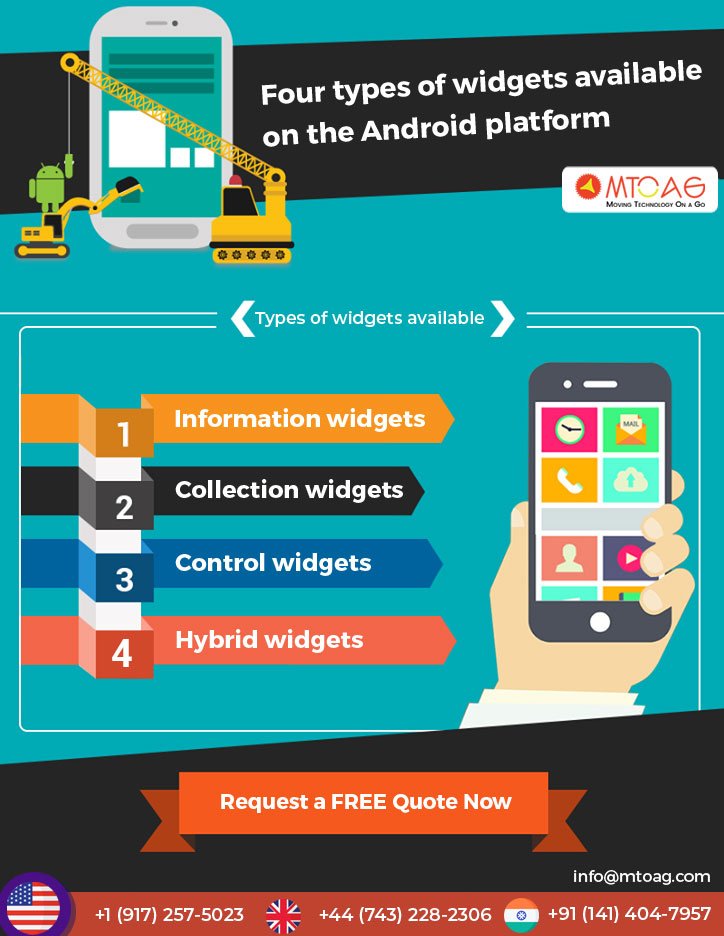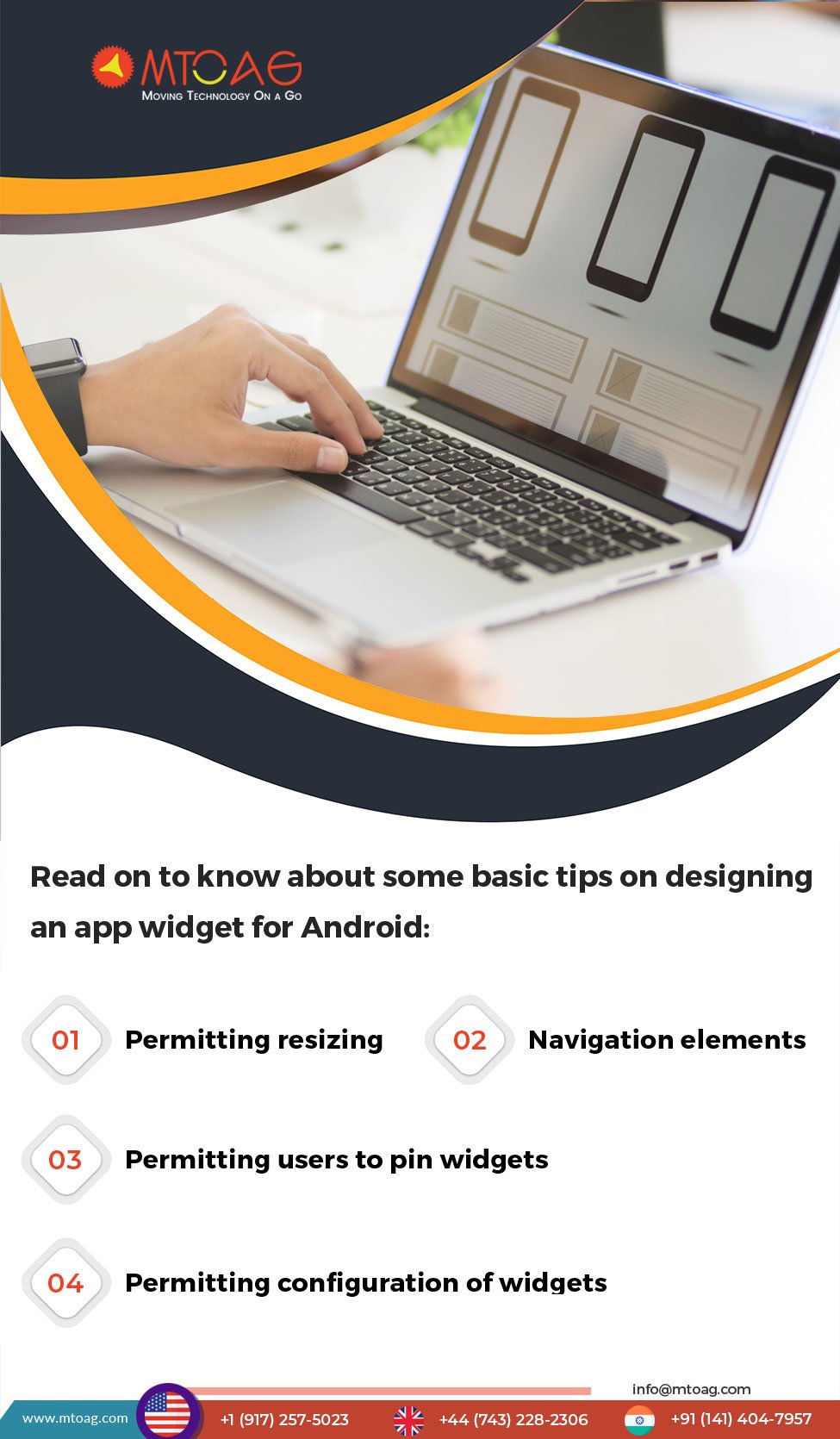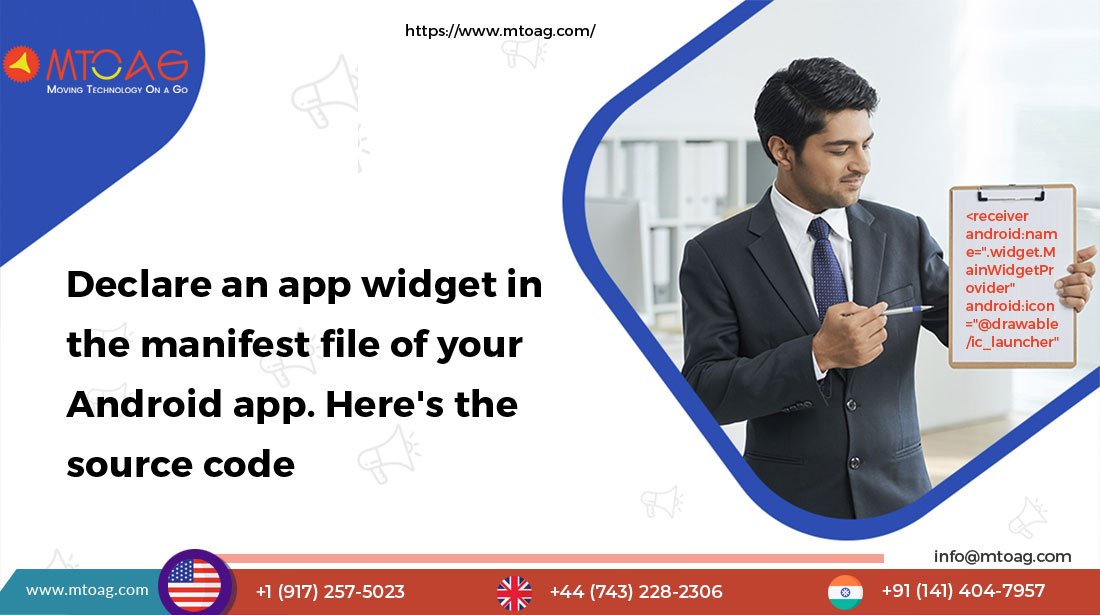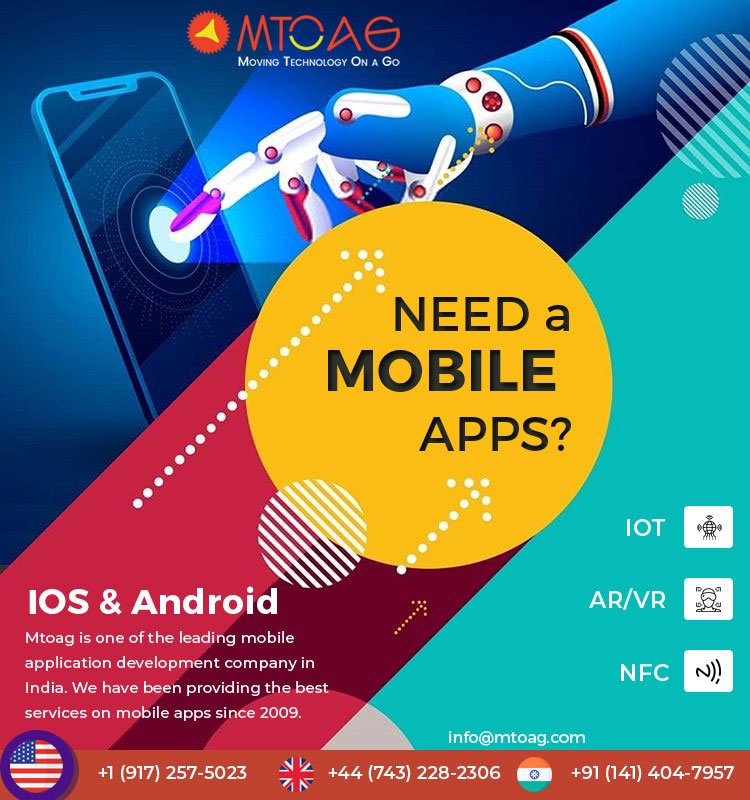2500+
Successful Projects
Widgets form an essential part of the home screen in Android OS since its inception in 2008. They can be considered as a convenient tool for enhancing user experience and a vital part of screen customization. Users get the convenience of ‘on sight’ information from the app’s widget without opening the app itself. Users can freely move widgets around their phone’s home screen and also resize them. They are at liberty to customize the widgets with regards to the information they need to be displayed.
Using widgets was so popular that it radically influenced mobile app development since its introduction. Some of the most popular must-have widgets are time, weather, video and music that can be seen on the Android home screen. The best part of widgets is that it saves users time and great for professionals on the move. One can also update widgets automatically according to a set time period or in response to finger taps.
Small, medium and large enterprises took an instant liking for creating widgets for their apps. Some of the big players include Google Chrome, Gmail, LinkedIn, etc.
If you are interested in getting a widget built for your app, there are few basics you need to follow. This article provides an elaborate overview on the same.
There are four types of widgets available on the Android platform.

these show a collection of emails, pics, clips, etc. Being a scrollable widget it is excellent for reading your emails and surfing down your inbox. On being tapped upon, the widget takes you directly within the email app such as Gmail, Outlook, etc.
these widgets form a majority segment of widgets that provide vital information to user such as time, weather, tasks, etc. The widget opens the application as soon as it receives a tap on it.
as the name suggests, these widgets control the functions of the app. It is best used for viewing clips, videos or playing music. One can start, pause, continue and skip tracks without opening the main app.
help to combine the components of the other three widget types. Widgets are limited to vertical swipe and touch gestures. For apt usage, the widget should maintain a minimum size of 4x4 cells.

Users should be able to resize the widget according to their different size preferences. This will help them to adjust the height and width of the widget within limits of the home screen.
Widget should be similar to displaying newspaper headline stories and then leading the user to detailed section in the app.
Navigation buttons should be included for leading the user to the app and back to home screen or settings. It should be functional for updating information as and when assigned or required.
As seen in Android 8.0 Oreo version that had launchers to allow users to pin app widgets and also create pinned miniature app shortcuts. Pinned widgets are easy to implement and provide access to users for conducting precise tasks in the app.
Android widgets show their configuration sets when brought on to the home screen. User should be permitted to configure widgets by selecting from the given choices for their proper functioning. It is suggested to provide a maximum of three configuration options in the widget.


If looking to hire android app developer for getting a widget created for your app, we are here for you. Mtoag is an android app development company with a proficient team of Android and iOS app developers . Get in touch with us for android widgets or mobile app development.